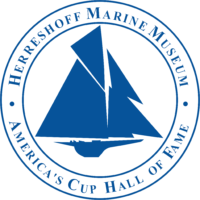September 22, 2022
From the Vault: “& The Young People Went Off in NEON…”
A turn-of-the-century boatbuilding project from the Love Rocks "playroom"
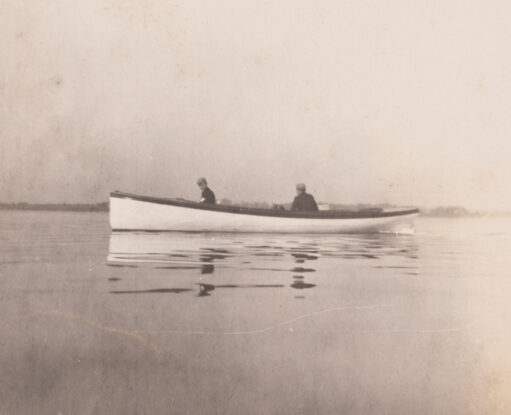
Few artifacts in the collection offer a better glimpse of HMCo. & the Herreshoff family at the turn of the 20th century than the photo albums of Captain Nat’s eldest child, Agnes. She carefully pasted prints and cyanotypes into photo albums with neatly penned annotations and dates. The collection of albums (now in the archive at HMM) show a happy and very busy crowd in all seasons: picnicking on Prudence Island, dogs and cats in the yard at Love Rocks, kids on bicycles, small boat sailing and swimming in summer, and sail skating, iceboating, sledding, and the family home decked out for Christmas in winter. We have recently upgraded some components of our digitization studio at HMM and are now better equipped to scan these tiny photos at high resolution; we will be highlighting some of that material in our regular “From the Vault” series in the coming months.
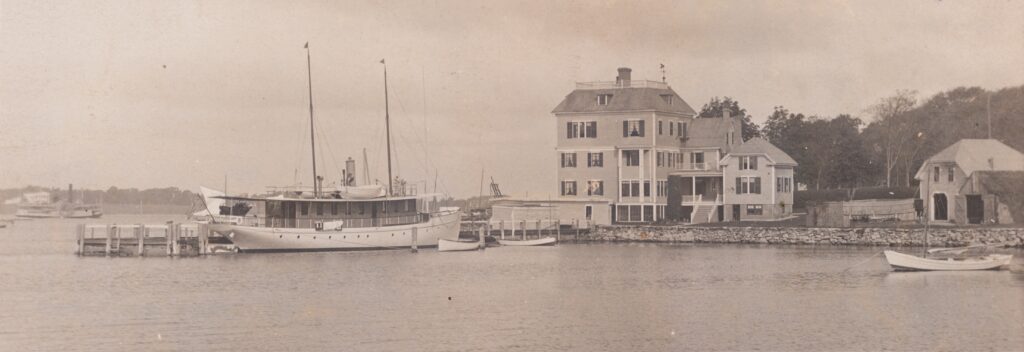
The winter of 1902-1903 was a very busy one for HMCo. The enormously complex Cup defender RELIANCE (HMCo. #605) was under construction, while HMCo. business carried on as usual: they were also building several large steam yachts, high speed steam launches, a whole fleet of Bar Harbor 31s, and the usual constant stream of tenders and dinghies… altogether, 45 boats were completed between September of 1902 and RELIANCE’s launching in April. Experiments were under way in outfitting small launches with electric motors as tenders for large steam yachts, and HMCo. was simultaneously just beginning to work with gasoline engines. Captain Nat had plenty on his plate. And, as if this wasn’t enough… even the basement at Love Rocks, Captain Nat’s own home, was temporarily transformed into a boat shop during that industrious winter of 1902-1903.
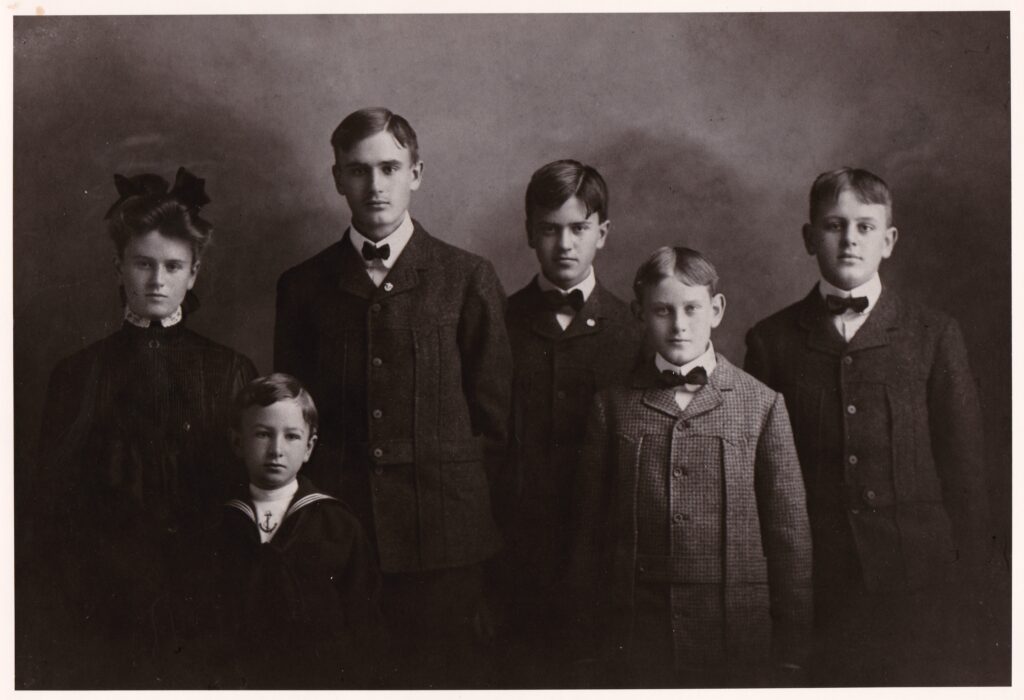
Captain Nat & Clara DeWolf Herreshoff had six children - Agnes (1884), Sidney (1886), Nat Jr. (1888), Griswold (1889), L. Francis (1890) and Clarence (1895). A few ghosts of their collective childhood survive in the collection: a measuring stick in the Model Room on which Captain Nat - ever the mathematician and engineer - charted their growth; a sailing model catboat passed from one sibling to the next, with each successive proud owner’s name penciled on the deck; a little upwind propeller boat model that really goes; a steam engine that once lived in their playroom… but the best evidence in the collection today of the lives of the children of Love Rocks is captured in Agnes’ photo albums from her late teens and early 20s.
That winter Agnes was 18 years old and photographing away (as evidenced by many of the photos in this post). Sid was 16, Nat Jr. 14 turning 15, Griswold 13 going on 14, L. Francis was 12, and Clarence (“the baby”) turned 8 in February 1903. Though their father was busy and often difficult to track down, it was, in retrospect, a period of stability and comfort for the children: their mother Clara (Caddie) was not yet showing the symptoms of the cancer that would lead to her death in November of 1905, and the family had recently begun to spend more time together (presumably with Captain Nat’s less-divided attention) on extended summer cruises, first in a chartered steam yacht and then in N.G.H.’s own 94’ HMCo.-built steam yacht ROAMER (HMCo. #215). Though RELIANCE must have been a source of excitement for the kids that winter, the gasoline engine experiments seem to have intrigued them even more - enough so that they convinced their father to let them build a 21’ launch to be outfitted with one of these newfangled internal combustion engines in their basement “playroom” at Love Rocks.* This would be the first gasoline launch to be owned by the Herreshoff family.


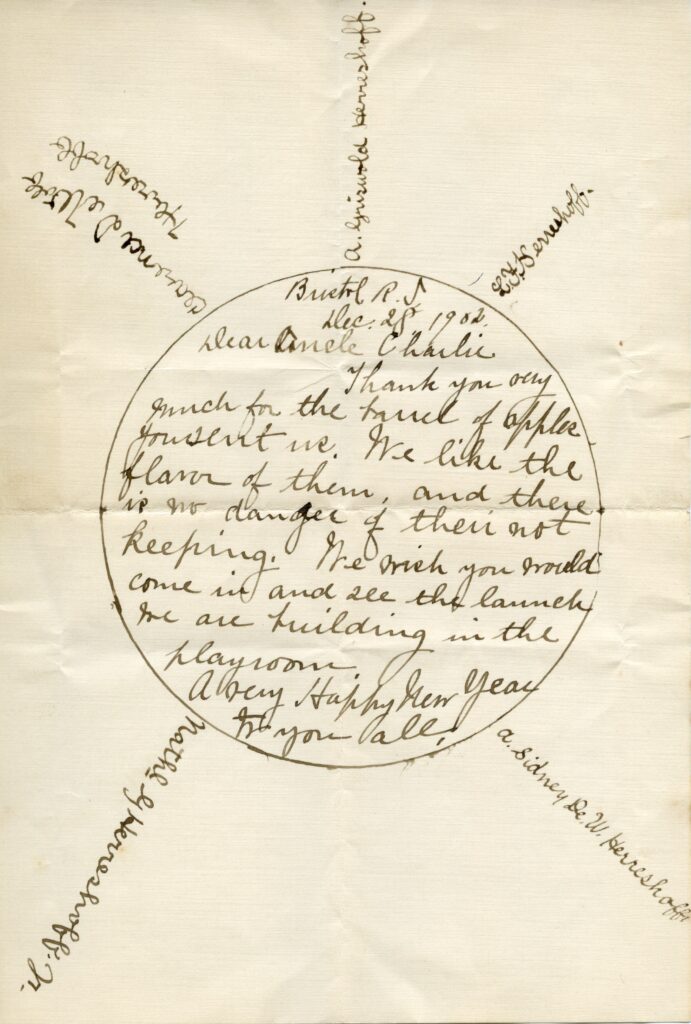
We don’t know exactly when construction started on the launch that would be named NEON, but we do know that the project was under way in December of 1902, thanks to mention of it in a charming thank-you note for a barrel of apples to the boys' “Uncle Charlie” dated December 28, 1902. The design of the hull was based on a model carved by Captain Nat in 1888, and two yawlboats for BALLYMENA had been built previously to this model. A note in Captain Nat’s handwriting on NEON’s tracing-paper plan reads: “built by Sidney, Nat & Griswold. Winter of 1902-3. Note: When built gunwhale was raised higher than drawing & figures.” The added freeboard may have been an indication of Captain Nat’s concern for increased safety, a necessary addition given the weight of a power plant not included in the BALLYMENA yawlboats, or an interest in a general increase in carrying capacity with an eye toward those summer family cruises.
NEON was built upside down over molds in typical HMCo. fashion. In an interview towards the end of his life, Sidney recalled that despite the busy season, “Father helped us and showed us how to do some things. Starting the planking he had one of the men come down from the shop to get us started and show us how to do some things.” NEON was carvel planked and eventually received a 4.5 h.p. single cylinder, 4 cycle gasoline engine of unrecorded make. The fact that the Herreshoff kids were engaged in such a project was even mentioned as an aside in a New York Times report from May of 1903 on progress on RELIANCE. Most of the key details about NEON are erroneous, but even so! It must have been quite a thrill for the children to appear alongside the future Cup defender in the Times.
The date of NEON’s launching is unrecorded, perhaps lost in the larger excitement of RELIANCE’s launching, which was very likely around the same time. No photos of any launching celebration for NEON - if there even was time for one - have been identified among any of the family collections to date. But, despite the lack of recorded fanfare for its debut, the little launch soon begins to appear frequently in the log books Captain Nat kept of the family cruises in ROAMER. NEON was sometimes under tow, and sometimes set out ahead (usually piloted by Sid, who seems to have been more or less in charge of NEON as the oldest boy) to rendezvous with ROAMER at their planned destination for the day. NEON appears frequently in all the extant ROAMER logs from 1903 on, and is often described carrying large parties for exploration, bathing expeditions or fleet spectating at yacht races from New York to Maine. NEON reportedly towed well - she was too big to be carried on ROAMER’s davits - and only rarely held up the progress of a cruise when the weather was too poor for towing. Sometimes the NEON excursion parties from ROAMER occurred in company with the little experimental electric launch ROAMER carried on davits, or later with Griswold’s power canoe.
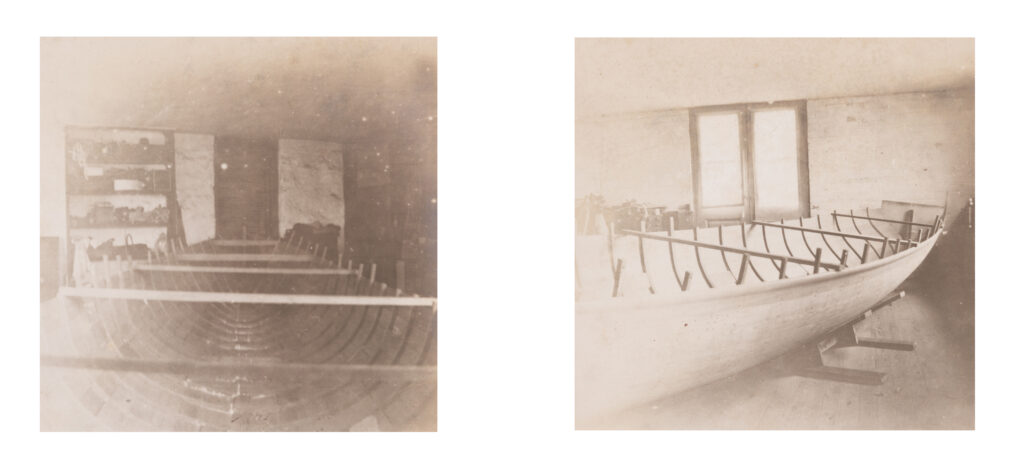
In addition to serving as a tender to the Herreshoff family steam yacht, NEON was actively campaigned by Sid on the race course - and won her class in many of the races they entered. According to speed trials recorded by Captain Nat in 1904, NEON made a little over 10.5 m.p.h. over a half mile course; this was about even, if not a little faster, than the 94’ ROAMER! Indeed, in the ROAMER logbooks it almost seems that NEON and ROAMER are informally racing on the days where NEON went under its own power - sometimes ROAMER arrived ahead of NEON, but if Sid left just a few minutes ahead, ROAMER often couldn't catch him. There are newspaper reports that NEON was re-powered at some point, but definitive documentation of this change has not yet been found in the archive. NEON’s end is likewise unrecorded, but it is possible the boat accompanied ROAMER for as long as ROAMER remained with the family. Perhaps NEON was replaced in Sid’s affection with the larger, faster and more powerful BUBBLE (HMCo. #285), a 25’10” LOA launch of Sidney’s own design that was built in the winter of 1911-1912, about the same time that ROAMER was sold. All in all the documentation is thin on the ground for this boat compared to actual HMCo. builds, simply because it wasn't a paid and contracted HMCo. job, and therefore did not get recorded the way HMCo. builds of this size were. This is true for many of the family boats built at home or just outside the HMCo. system, from canoes to ice boats. Though they are often poorly documented, like NEON, they appear in many of Agnes' photos and in some family correspondence, and we are always trying to learn more about them as we continue to process archival material in HMM's collection and increasingly gain virtual access to collections elsewhere.
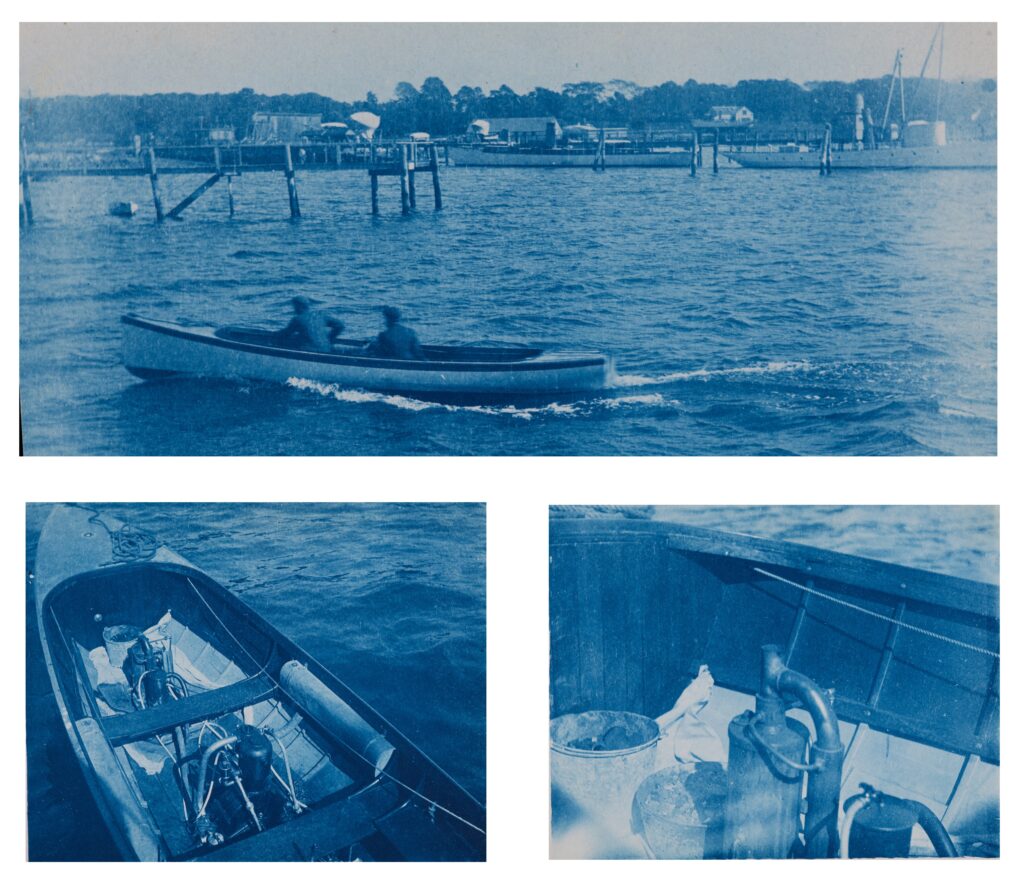
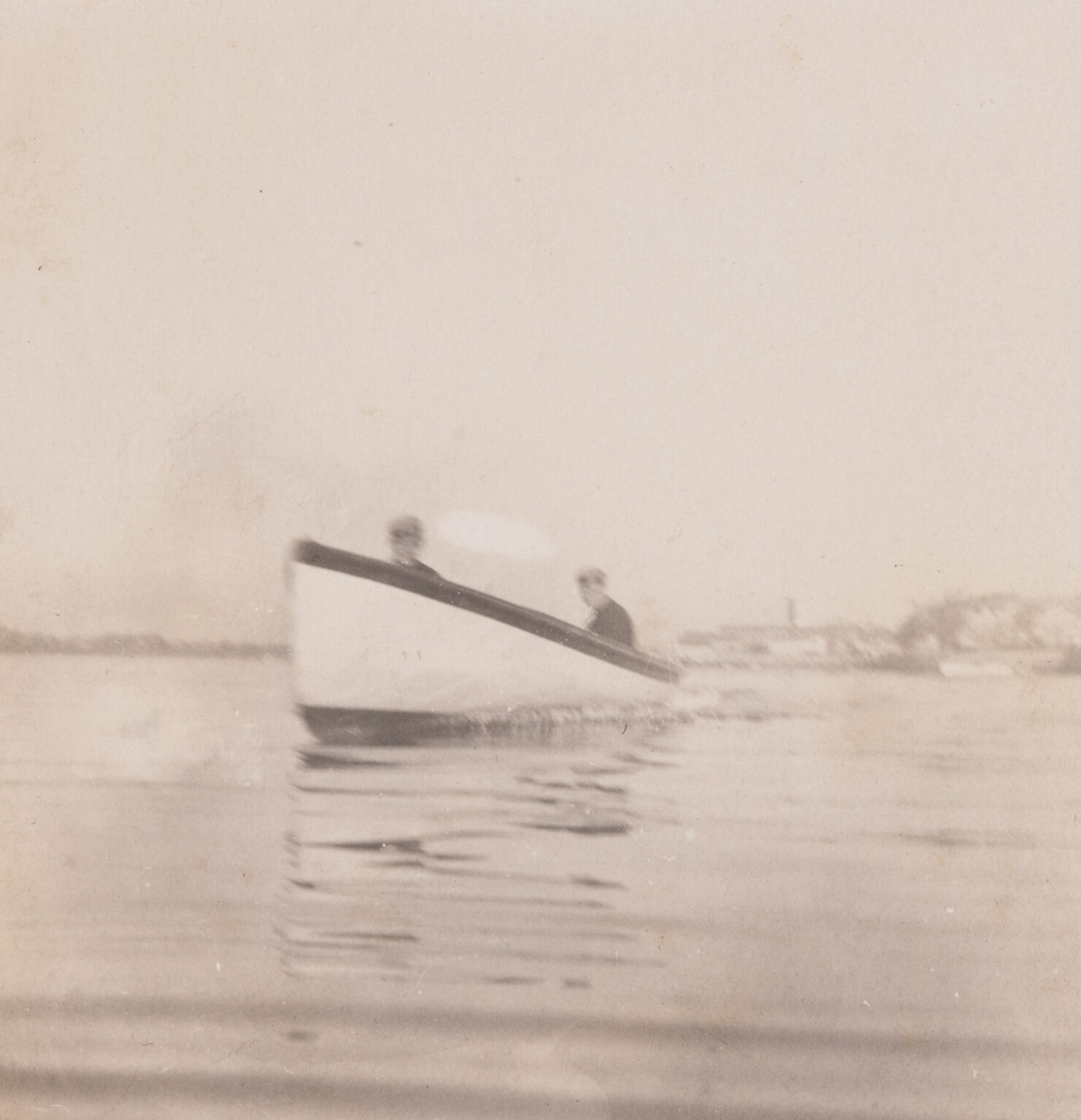
Many have speculated how Captain Nat’s reportedly taciturn nature translated into his home life at Love Rocks. Six children were raised on the corner of Hope & Walley streets, sandwiched in-between the main HMCo. plant to the north and the Walker’s Cove storage facility to the south. They were mostly in the care of two women: Clara, before her death, and her nurse Ann Roebuck, who eventually became the second Mrs. Herreshoff. As the oldest and the only girl, some responsibility especially for the youngest children must also have fallen on Agnes during and after Clara's illness. Only quiet and occasional glimpses of the children's relationship to one of the most famous (and busiest) naval architects in the world survive in the archive, and their lives were surely marked by tragedy with the loss of their mother while they were still quite young. But the case of NEON is revealing of both the freedom and the responsibility they were afforded from a relatively young age. It is also telling of the privilege they enjoyed, and the substantial resources at their disposal - imagine, during a winter like that of 1902-1903 calling any of the much-needed HMCo. employees away for a kids boatbuilding project! - but, oh, what fun it all must have been. To build and own a boat of one’s own, complete with the latest in gasoline technology, to race and win, to carry happy parties of bathers to the beach, to explore new towns and strange inlets, and to go upriver on long family cruises… not a bad way to spend one's teenage years.
* It is not totally clear from archival sources whether Captain Nat encouraged the kids to build this boat or whether the kids came up with the idea themselves and/or had to do any convincing. Sidney recalled that N.G.H. encouraged the project, but given Captain Nat’s well-documented dislike for gasoline engines measured against the boys’ later interests, it seems possible the gasoline engine was advocated for by the kids; after all, the launch was just about large enough to carry a steam plant. The fact that it did not might suggest a concession on the part of their steam engineer father.
You can learn more about NEON via the extraordinary Herreshoff Catalogue Raisonné. This piece would not have been possible without the Herculean and decades-long efforts cataloging, collecting and organizing data undertaken by the creators of the HCR.
